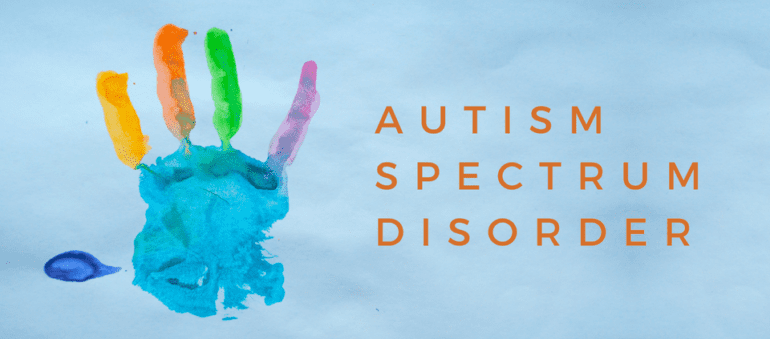TL;DR:
- A recent study reveals AI’s potential to diagnose autism spectrum disorder (ASD) through brain imaging data.
- Published in “Scientific Reports,” the research employs machine learning techniques on 500 individuals, half of whom had ASD.
- The unique methodology examines brain network organization, offering accurate diagnosis with over 95% accuracy.
- ASD patients exhibit distinct brain alterations affecting cognitive, emotional, learning, and memory processes.
- The AI-driven approach opens avenues for similar diagnostic methods in mental health, such as schizophrenia and Alzheimer’s.
- The multidisciplinary collaboration among physicists, statisticians, physicians, and neuroscientists underscores the study’s significance.
Main AI News:
The realm of diagnosing autism spectrum disorder (ASD) has long been a formidable challenge, necessitating the expertise of highly skilled clinicians due to its intricate nature. Autism, a multifaceted neurodevelopmental disorder, manifests through a spectrum of symptoms. However, a recent groundbreaking study has thrust artificial intelligence (AI) into the forefront of ASD diagnosis.
Published in the esteemed journal “Scientific Reports,” this study unveils a monumental shift in how we approach ASD diagnosis. Leveraging the potential of AI, researchers turned to advanced machine learning techniques and harnessed the power of brain imaging data from a cohort of 500 individuals. Remarkably, almost half of these subjects—242 to be exact—had previously been diagnosed with ASD.
Lead researcher Francisco Rodrigues, a distinguished professor at the Institute of Mathematics and Computer Science at the University of São Paulo, embarked on this trailblazing journey supported by FAPESP. Rodrigues shared that their methodology originated from amassing functional magnetic resonance imaging (fMRI) and electroencephalogram (EEG) data, marking a critical first step.
The innovation driving this study lies in its profound commitment to exploring brain network organization—an aspect that has often been overlooked in similar research. Rodrigues expounds that the study juxtaposed brain maps of individuals with and without ASD, unveiling the potential for accurate diagnosis using this novel methodology.
The researchers ingeniously fed the AI with these distinctive brain maps. Guided by these learning examples, the AI system discerned brain alterations tied to ASD with an astonishing accuracy rate exceeding 95%. While other studies have dabbled in diagnosing ASD through machine learning, they often relied on singular statistical parameters. Here, the true distinction lies in the intricate web of brain network organization.
Drawing parallels to road systems and their disruptions impacting regional traffic flow, the brain’s network organization plays a pivotal role in behavior modulation. Through rigorous analysis of fMRI data, researchers illuminated conspicuous changes in specific brain regions responsible for cognitive, emotional, learning, and memory processes. Notably, the cortical networks of individuals with ASD exhibited higher levels of segregation, reduced information dissemination, and decreased connectivity when juxtaposed with control subjects.
This study marks a significant leap forward in our comprehension of ASD’s underlying neurodivergence. Rodrigues asserts that their pursuit will yield a deeper understanding of cerebral disparities, providing invaluable support to specialists, particularly in cases fraught with diagnostic uncertainty.
Despite its promise, the methodology remains a work in progress, with years of refinement ahead. Nevertheless, it is poised to reshape the landscape of ASD diagnosis and enhance our understanding of neural distinctions. This groundbreaking work also holds implications beyond ASD, potentially extending its utility to the diagnosis of other conditions. Prior research has showcased its potential in detecting schizophrenia with remarkable precision.
Rodrigues emphasizes that their journey into uncovering neurological conditions commenced a decade ago. The team’s efforts in schizophrenia diagnosis and their recent strides in tackling Alzheimer’s disease through brain networks and AI underscore their commitment to advancing mental health diagnostics. This pursuit holds the promise of bridging the gap between different conditions and inspiring novel therapeutic approaches.
The path forward is undoubtedly ambitious, peppered with obstacles such as limited databases and data collection complexities. Nonetheless, the multidisciplinary collaboration of physicists, statisticians, physicians, and neuroscientists from centers across Brazil, France, and Germany showcases the determination behind this pioneering study. These dedicated professionals combed through medical data provided by neurologists and scrutinized brain imaging studies to fine-tune algorithms crafted by physicists and statisticians.
Conclusion:
The emergence of AI-driven ASD diagnosis marks a transformative milestone in the field of mental health diagnostics. By harnessing the power of advanced machine learning and brain imaging, this study not only propels accurate autism diagnosis but also paves the way for novel approaches to addressing other intricate mental health conditions. The interdisciplinary nature of this research showcases a path forward for comprehensive and informed diagnostics, with profound implications for the broader healthcare market.

